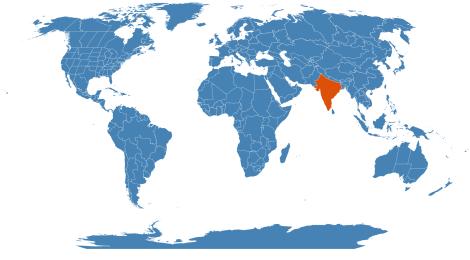Accession Data
Elettaria cardamomum
Common Name: Cardamom
Family: Zingiberaceae
Country of Origin: SW India
Uses: Cardamon is rich in nutritients such as potassium, iron, fiber, and some magnesium. For centuries, Ayurveda traditions have used the plant to aide in digestive disorders. It is a diuretic that detoxes the body, cleansing infections of both the urinary system and cardiovascular system. Not only is this plant a tonic for the body, essential oil from this plant has resulted in reducing lesions within the intestinal tract.5
It helps with nausea, vomiting, bloated stomach, stomach pain, and intestinal discomfort. This plant aides the Pita veda as a warming agent. This strengthens blood circulation throughout the body and to the lungs. Because of this property, it may help treat respiratory disorders.
Different teas and natural remedies with the plant have been used as effective aides.
Because of the harmful affects of chemically synthesized pesticides, the composition of Cardamom essential oil was tested against three different species of pests. Results showed that Cardamon's antimicrobial properties effectively protected the tree species being treated while killing the pests. 6
Accession Data
USDA Zone: 10a-11
Accession #: 201500133
Accession Date: 2015-11-12 00:00:00
Bloom Status: 🪴 Not Flowering
Location: 1202
Quantity: 2
Source: Lynn Janik - UWisc Eau Claire
Culture: Filtered shade, constantly wet roots, ideally temps around 72F, acidic soil.
Classification
Division: Magnoliophyta
Class: Liliopsida
Subclass: commelinids
Order: Zingiberales
Family: Zingiberaceae
SubFamily: Alpinioideae
Tribe: Alpinieae
References
- The Plant List (2013). Version 1.1. Last accessed on Thursday, February 01, 2018.
- WCSP (2014). World Checklist of Selected Plant Families. Facilitated by the Royal Botanic Gardens, Kew. Last accessed on Thursday, February 01, 2018.
- Elettaria cardamomum at Wikipedia. Last accessed on Thursday, February 01, 2018.
- Image #00 (cropped) & #01 (original) by Luc Viatour [GFDL, CC-BY-SA-3.0 or CC BY-SA 2.5-2.0-1.0], via Wikimedia Commons. Last accessed on Thursday, February 01, 2018.
- A.Jamal, Kalim Javed M. Aslama M.A.Jafri, Gastroprotective effect of cardamom, Elettaria cardamomum Maton. fruits in rats Journal of Ethnopharmacology Volume 103, Issue 2, 16 January 2006, Pages 149-153. Last accessed on Thursday, February 01, 2018.
- Habib Abbasipour, Mohammad Mahmoudvand, Fahimeh Rastegar and Mohammad Hossein Hosseinpour, Fumigant Toxicity and Oviposition Deterrency of the Essential Oil from Cardamom, Elettaria cardamomum, Against Three Stored-product Insects Journal of Insect Science 11(165): 1-10. 2011. Last accessed on Thursday, February 01, 2018.
- Medicinal Plants Names Service at Kew. Last accessed on Wednesday, 22 May, 2019.
Images


